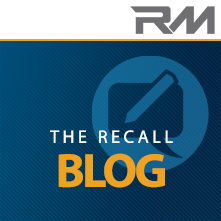5 Best Practices to Transform Recalls into Retention
5 Best Practices to Transform Recalls into Retention
…
Recalls are a fact of life in today’s automotive industry. In 2025 alone, millions of vehicles have already been recalled. For many customers, multiple recall notices can create frustration and even damage their perception of a brand. But for dealerships, every recall is also an opportunity to strengthen customer trust, reinforce your reputation for service, and capture loyalty that will last long after the recall is complete.
Here are best practices you can put in place today to transform recall visits into long-term relationships:
1. Lead with Transparency and Care
When a customer arrives for a recall, start with empathy. Acknowledge the inconvenience and make it clear that your dealership’s priority is their safety and peace of mind. Provide simple, plain-English explanations of the issue and how the repair solves it. This builds confidence in both your team and the brand.
…
2. Make the Experience Hassle-Free
- Dedicated Recall Lane or Coordinator: Streamline intake so customers aren’t waiting behind unrelated repairs.
- Loaners and Shuttle Support: Always provide alternate transportation for safety-critical recalls.
- Surprise-and-Delight Extras: A free wash, vacuum, or small thank-you gesture reframes the experience as positive.
…
3. Use Mobile Service as a Differentiator
Mobile recall service is one of the most powerful tools to improve customer experience:
- Perform software updates and minor repairs at the customer’s home or workplace.
- Offer pickup and delivery for larger recall repairs.
- Provide live updates and technician tracking to add transparency.
- Leverage data like Recall Masters’ MarketSMART reports, which allows dealers to view vehicles with open recalls sitting on off-brand franchise dealers lots or on independent dealer lots. Protect the brand before it lands in the hands of a consumer.
- These options remove the single biggest barrier to recall compliance – inconvenience – while positioning your dealership as innovative and customer-focused.
…
4. Over-Communicate with Status Updates
Owners get frustrated when they’re left in the dark. Send proactive messages via text, email, or phone to confirm appointments, update repair status, and notify when the vehicle is ready. If parts are delayed, communicate early and often. Customers are more forgiving when they feel informed.
…
5. Turn Recalls into Retention Opportunities
Every recall visit should end with:
- Next Appointment Scheduling: Book their next oil change or service before they leave, just like a doctor’s office.
- CSI Follow-Up: Send a survey or personal call to gauge satisfaction and resolve issues quickly.
Loyalty Rewards: Tie recall work into your rewards program with points, discounts, or service offers.
…
Final Thought:
Recalls may start as a negative event, but the way your dealership handles them determines how customers feel about your store and the brand. By offering convenience, transparency, and care, you can transform a recall from a frustration into a loyalty-building moment.
Remember: It’s not just about fixing the car; it’s about retaining the customer by doing what’s right and meeting their expectations.
…
About the Author


